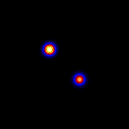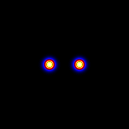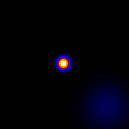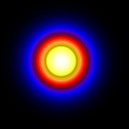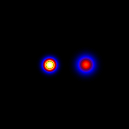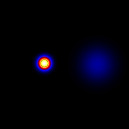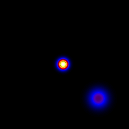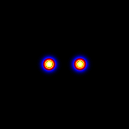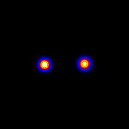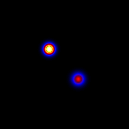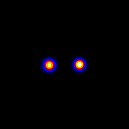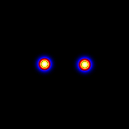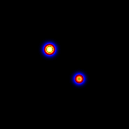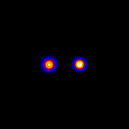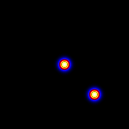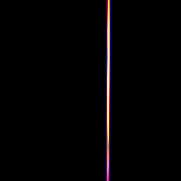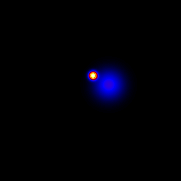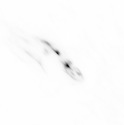Aima. To determine to what extent the problem of forward fitting visibilities measured by the Spectrometer/Telescope Imaging X-rays (STIX) on-board Solar Orbiter is more challenging with respect to the same problem in the case of previous hard X-ray solar imaging missions; to identify an effective optimization scheme for parametric imaging for STIX. Methods. This paper introduces a Particle Swarm Optimization (PSO) algorithm for forward fitting STIX visibilities and compares its effectiveness with respect to the standard simplex-based optimization algorithm used so far for the analysis of visibilities measured by the Reuven Ramaty High Energy Solar Spectroscopic Imager (RHESSI). This comparison is made by considering experimental visibilities measured by both RHESSI and STIX, and synthetic visibilities generated by accounting for the STIX signal formation model. Results. We found out that the parametric imaging approach based on PSO is as reliable as the one based on the simplex method in the case of RHESSI visibilities. However, PSO is significantly more robust when applied to STIX simulated and experimental visibilities. Conclusions. Standard deterministic optimization is not effective enough for forward-fitting the few visibilities sampled by STIX in the angular frequency plane. Therefore a more sofisticated optimization scheme must be introduced for parametric imaging in the case of the Solar Orbiter X-ray telescope. The forward-fitting routine based on PSO we introduced in this paper proved to be significantly robust and reliable, and could be considered as an effective candidate tool for parametric imaging in the STIX context.
翻译:Aima. 确定在以往的硬X射线太阳成像任务中,由Spectroterm/望远镜在太阳轨道上的X光成像仪(STIX)所测量的远方适配性问题在多大程度上对同一问题具有更大的挑战性;为STIX. 方法. 本文为前方STIX的适配性引入了粒子蒸汽优化算法(PSO)算法,并比较了它与迄今为止用于分析Reuven Reusty 常规能源高超光谱成像仪(STIX)所测量的远方光谱成像仪(STIX)所测量的远端适配性标准简单化优化算法(PSO)的实效性。然而,在SHISISI和SSTIX的实验性精确性分析中,采用这种精确性比前方精确度更稳健的比标准。





